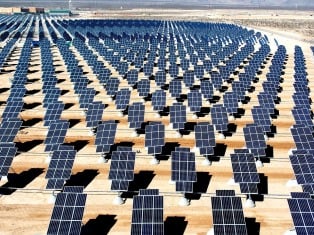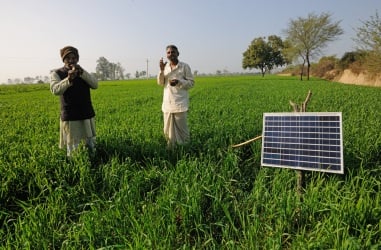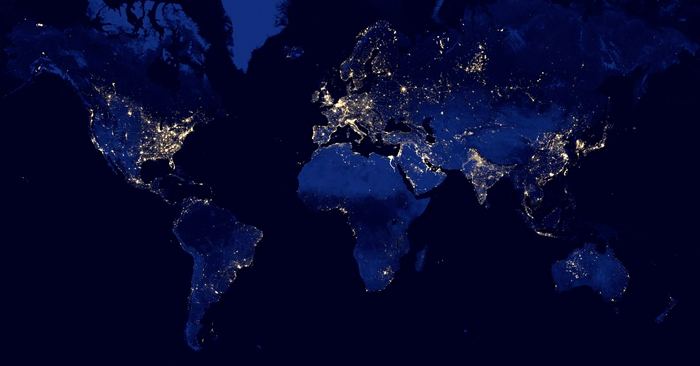In our globalized and quickly modernizing society, we are using more resources than ever before. Electricity demands are expected to rise by 70% from 2010 to 2035, and about half of this energy will be used by the People’s Republic of China (PRC) and India, according to the Asian Development Bank.
This statistic reflects China’s current position as the country with the highest electricity consumption in the world, with just over 5.5 billion MW per hour in one year. Following close behind is the United States as the second highest, with slightly under 5 billion MW per hour in one year.
Even with modern energy production standards, how is such a projection to be met by 2035? While electricity is quickly becoming the most common method of energy consumption, coal use is rising for power generation, making it the chief nominee to meet this rising demand.
Fossil Fuels and Coal Power

This outcome is somewhat familiar, since coal is the least expensive fossil fuel in the world. In fact, most Asian countries continue to use it. Coal is cheap, not subject to heavy import taxes (the US and Australia being its largest exporters), and is available locally. In 2015, 67% of electricity in the United States was powered by fossil fuels (natural gas, petroleum, and coal), about 33% of which was coal.
To illustrate this dependency on fossil fuels, about 500 new coal-fired plants were built in Asia last year, with thousands currently in development. This figure represents coal’s high accessibility and affordability, despite its environmental drawbacks.
Renewable Energy

Despite the overwhelming demand for this cheap fossil fuel, many governments are enacting renewable energy goals for their countries. San Francisco, California, is the first American city to require all new buildings to have solar panels on their roofs.
Following this trend of renewable energy, other nations face increasing pressure to lessen their carbon footprint. In the 2015 UN climate change talks, the Philippines pledged to reduce its carbon emissions by 2030 through a 70% reduction goal.
Among their recent renewable energy initiatives, the Philippines opened the Burgos Wind Farm in 2015. Consisting of 50 wind turbines, the 150-megawatt power plant is one of the largest wind farms in Asia. “We are now the renewable energy capital of the Philippines, actually, not only in the Philippines but in Southeast Asia,” Ilocos Norte Governor Aimee Marcos told reporters in a recent briefing here.
India’s Solar Panels
Similarly, other Asian countries are following close behind on renewable energy trends. India has seen a rise in rent-to-own solar power usage through the purchase of Simpa Network solar systems.
Due solar panels’ high initial cost, often necessary to pay off investors, private individuals are hesitant to purchase them. Making such a large and expensive commitment to a new piece of technology, with no assurance that it will function properly, make solar panels an unattractive option to Second and Third World countries.

Nevertheless, it is these communities with highly saturated power grids, that would benefit the most from solar panels. To address this issue, Canadian entrepreneur Paul Needham introduced the Simpa Network solar panels.
The base solar panel model is operated on a direct current (DC power) and is as large as a game table. The model includes a 40 watt solar panel, a 26 amp-hour battery, two LED lights, a 15-watt electrical outlet for appliances and two ports to charge or power USB devices.
With a price tag of $270 which can be paid in monthly installments over two or three years, these panels are an attractive form of renewable—and accessible—energy for low-income communities. The Simpa Network panels have been installed in over 20,000 homes with a goal of 1 million solar-equipped rooftops by 2019.
Cycle of Poverty
The correlation between coal and the world’s poorest economies is no coincidence, meeting about 45% of India’s annual energy demand.
About 1.6 billion people in the world do not have access to electricity, and perhaps 1 billion more have unreliable connections for a portion of the day. For some people, the cost to power their home with electricity could claim over 20% of their income, contributing to a cycle of poverty.
Whether nations continue to build more power plants, or citizens begin to take energy matters into their own hands, the answer to an energy deficiency crisis still varies greatly.
Contact Us – to learn more about Renewable Energy Products, or Electronic Components relative to Power Generation.

Why We Are One
For over 40 years, IBS Electronics Group has provided a broad range of integrated supply chain and electronicsmanufacturing solutions tailored specific to our customer's operations. As your one source for the industry’s top brands all in one place, our engineers specialize in reducing supply chain complexity and are here to provide you with dedicated support from prototype to production.




.png)


.png?resizemode=force&maxsidesize=96)